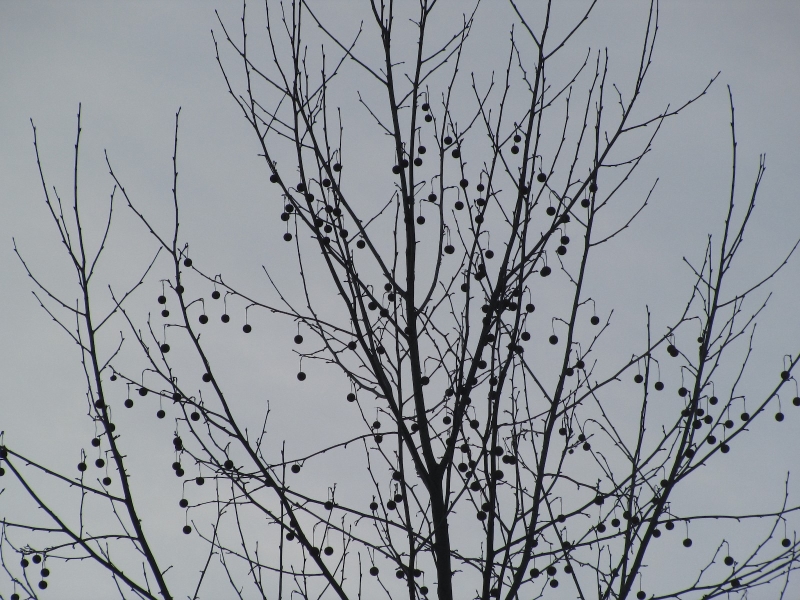American Sycamore (Plantanus occidentalis)
The sycamore can grow to be 35 m in height, 200 cm in diameter, and live to be 250 years old, making it one of the largest deciduous trees in eastern North America. The largest American Sycamore tree in Ontario is located in Alvinston and has a diameter at breast height of 236 cm. Other common names include buttonwood and buttonball-tree after the fuzzy, spherical fruiting balls that dangle from the tree like Christmas ornaments. Each fruiting ball contains numerous, tiny seed-like fruits that are carried by wind and water, and require sunlight to germinate. The sycamore can be easily identified in all seasons by its distinctive bark. The outer brown bark flakes off in large patches exposing the green, white or cream-coloured inner bark creating a camouflage-looking pattern.

Distinctive camouflage patterned bark. Photo: Sean Fox

Small, spherical fruiting body containing numerous seeds.Mature in fall and some remain on the tree throughout the winter. Photo: Chris Earley

Sycamore silhouette. Fruits hang individually from a 8-16 cm long stalk. Photo: Chris Earley

Alternately arranged leaves are coarsely toothed, usually with 3-5 shallow lobes. Photo: Sean Fox

Ontario Tree Atlas map of non-planted American Sycamore. 1995-1999.